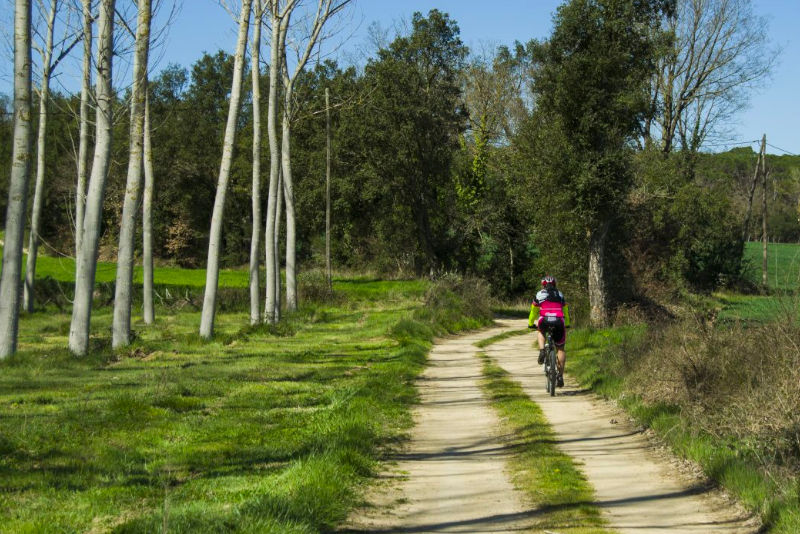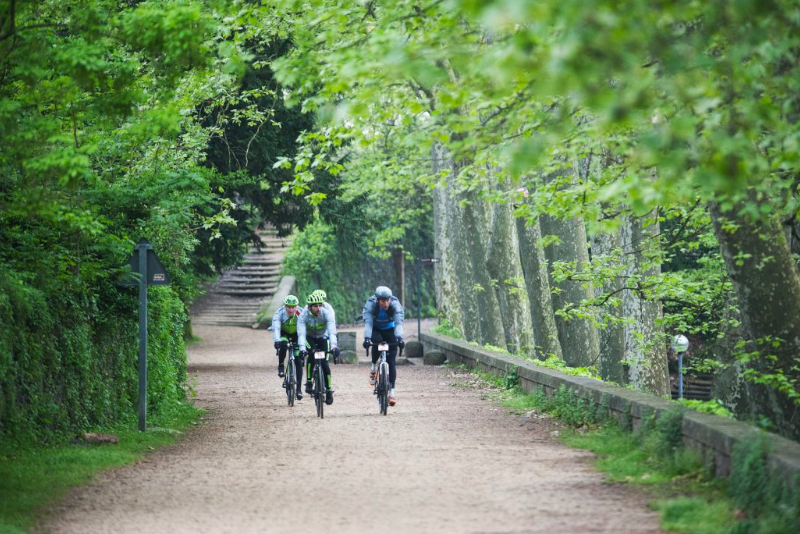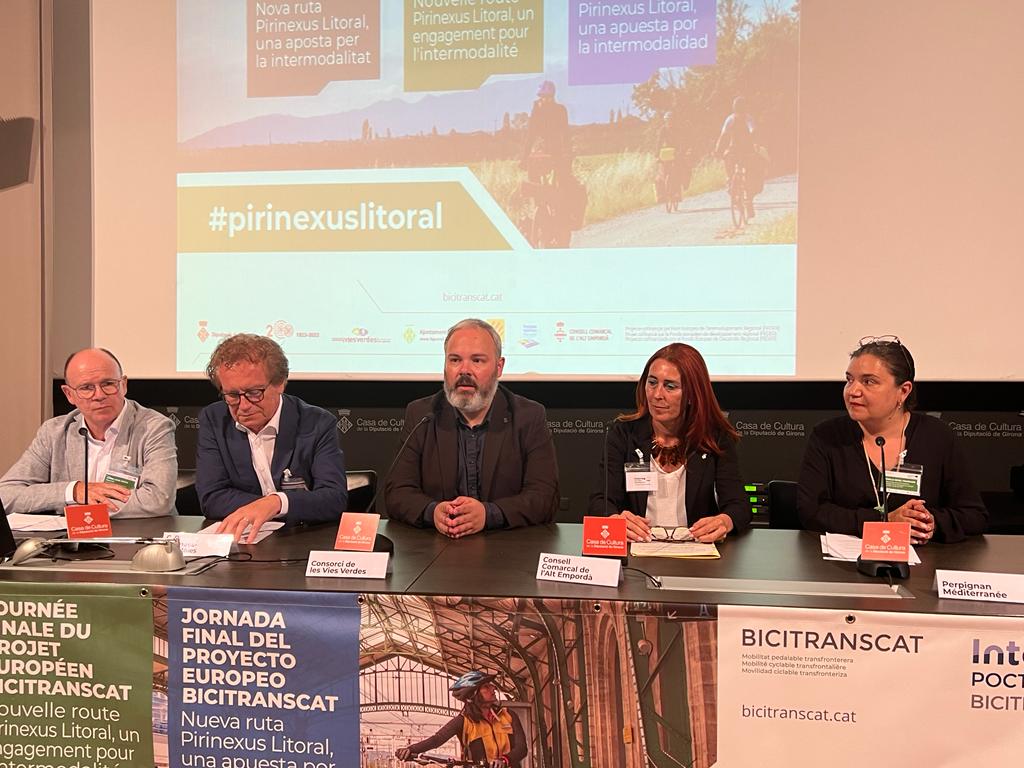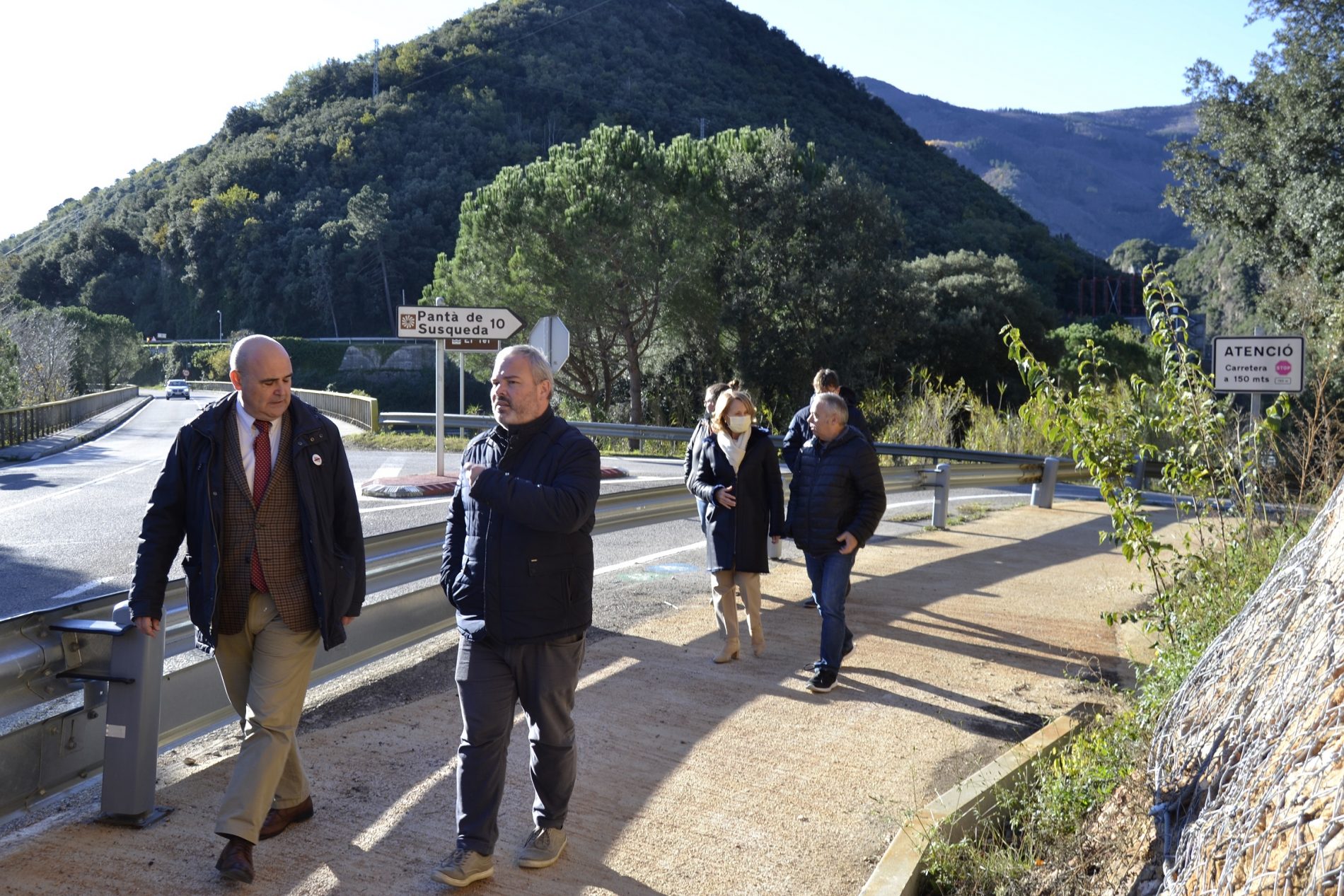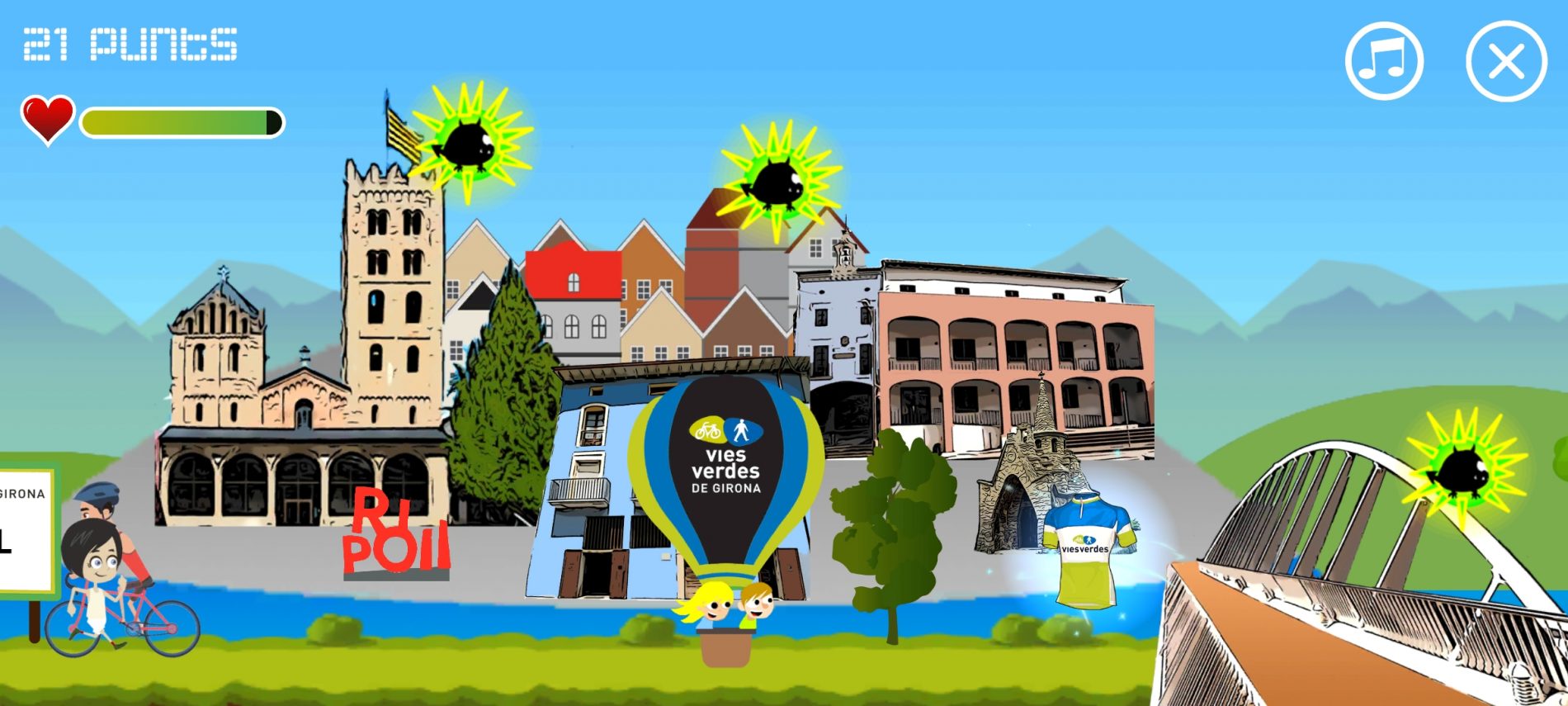What to visit
Caldes de Malavella
Thermal Greenway
The Thermal Route greenway owes its name to the fact that Caldes de Malavella’s history is forged and characterized by its thermal waters. So much so that, following the route through the town, you get to see the hot water fountains, bottling plants, spas and heritage assets that owe their very existence to this feature of Caldes, such as the Roman thermal baths at Puig de Sant Grau, the remains of the town of Aquae Calidae and the Art Nouveau buildings linked to the emergence of late 19th-century spa activity.
At the heart of the town’s historic centre, you can visit the Espai Aquae museological centre, which aims to offer a comprehensive overview of the town, from the geological formation of Caldes, through the ancient period, up to today, with the industrial exploitation of water and the excavations at the Camp dels Ninots palaeontological site.
Just a few metres from the urban section of the Thermal Route you can also find the Tourist Office, which is the starting point for various walks through the historic centre, such as “Heritage and fountains” and “Caldes in times of war, 1936-1945”, with the story of the Italian sailors and Nazi spies who took refuge in Caldes in the mid-20th century.
1. Espai AQUAE MUSEOLOGICAL CENTER
The Espai Aquae in Caldes de Malavella is an innovative museological centre located in the old castle of Caldes, of which a stretch of rampart and three medieval towers have been preserved. The museum space combines research, education and the interpretation of Caldes’ heritage. It offers a tour, covering 9 exhibition rooms, of the natural and cultural heritage forged over time by its waters.
Guide services can be hired.
www.espaiaquae.cat | info@espaiaquae.cat | Tel.: (+34) 600 372 610
2. ROMAN BATHS OF SAINT GRAU:
They are a Historical monument of national interest. These are the best-preserved remains of the Roman town of AQUAE CALIDAE, current Caldes de Malavella. Nowadays, you can see the working mechanisms of water almost intact. The building consists of a central pool and a series of cameras around to get healing treatments. There are three areas in the back, initially thought they were hot, but stays where it is taking oils. Their characteristics are essentially salutíferes probably linked to the cult of Apollo or of some other god of healing diseases.
Also, in this area is the hermitage of Sant Grau, a stretch of the wall and the remains of the medieval town (Cal Blacksmith Square and Can Trelles). Can and Can Manegat the Estapé (Pink House) are two examples of modernist architecture in this area.
3. THERMAL FOUNTAINS
- Mina Fountain: The Fountain of Mina is one of the best-known sources of the population. Appeared following an extraction dry land was held by a marshy field. At the bottom of the small depression hard thermal water springs (at a temperature of around 60 ° C), which is used in a few washes they collect excess water from the source. It is common for people throughout the region, queuing to take the waters, which demonstrates the wonderful healing qualities, digestive and culinary water from Caldes.
- Bullidor Fountain: It was the first source of thermal water for public use and it is believed that the waters were the source of the Kettles is channeled to the Roman Baths, due to its proximity. Achieved approval for marketing in 1902 under the name of “Vichy Caldense”, but soon after the trademark registration was refused permission notice and went to the water called “Water Xala “and since 1912 a definitive” Imperial Water.”
- Sant Narcis Fountain: It is located at Mount St. level and very close to the Roman Baths. It is formerly known by the name of St. Cecilia. The hill of travertine channel water through the cracks to its highest part then gets involved giving rise to various sources. Today is bottled under the name Water San Narciso.
4. SPA
- Prats Spa: A Thermal bath building dating from the second half of the nineteenth century. In 1912 Eusebi Bona made possible the restoration and extension that displays as it is now. It is accessed by a door that leads to the interior gardens. Notable careful design of floral ornaments and rose windows of the facade. Also important is the preservation of some good lounges and dining rooms within the spa, which reflect the elegance and style of the time. In its vicinity there is the House plan and Daniel, in the late nineteenth century and neoclassical. Other notable houses that climb av. Dr.Furest are: House of the poet Francis Matheu, Tower Bird and the Tower of Punxes.
- Vichy Catalan Spa: It is one of the largest thermal bath resorts in Catalonia. Construction began in 1898 on the initiative of Dr. Modest Furest and Rock. The building project, Mudejar style, was produced largely by Cayetano Buhigas. Inside there is a small chapel dedicated to St. Joseph and St. Stephen, which include the entrance and all the details inside. The main dining room retains the century Modernist decor. The Av. Dr. Furest is the road that leads from the railway station to the village and is where there are several homes with outstanding features and nineteenth-century modernists.



